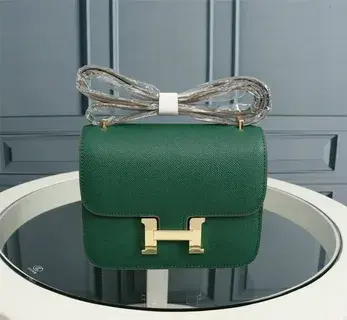Are Seiko Watches Worth It in 2025? A Buyer’s Perspective
- Maintenance indubai
- Jun 16
- 4 min read
Seiko has long been a cornerstone of the watch industry, with a heritage that spans well over a century. Known for delivering dependable timepieces at a range of price points, Seiko watches have served generations of wearers from entry-level enthusiasts to seasoned collectors. But in 2025, with the growing competition from Swiss, microbrands, and smartwatches, the question remains: Are Seiko Watches still worth it? This article takes a buyer-centric look at the value, quality, and relevance of Seiko watches today.
A Heritage Built on Innovation
Seiko’s claim to fame is not just in its craftsmanship but in its numerous industry innovations. Founded in 1881, Seiko introduced the first quartz wristwatch, the Astron, in 1969, revolutionizing timekeeping. They also developed the first kinetic movement and remain a rare watch brand that designs and manufactures every component in-house, including movements, cases, dials, and hands.
In 2025, this heritage still carries weight, especially for those who value horological authenticity. Few brands in Seiko’s price range can match this level of vertical integration and innovation history.
Value for Money: Tiered Offerings for All Budgets
Seiko 5 Sports product range is notably diverse, offering something for every kind of watch buyer. Here's how they stack up in various tiers:
1. Entry-Level (Under $500)
Models like the Seiko 5 Sports and Presage Cocktail Time are consistently praised for delivering mechanical movements, decent water resistance, and classic styling at prices that undercut Swiss competitors. In 2025, the rise of microbrands has challenged this space, but few can match Seiko's quality control and brand reputation at this price.
2. Mid-Range ($500–$2,000)
Here, Seiko offers dive watches such as the Prospex Turtle, Samurai, and Alpinist. These watches are ISO-certified divers with rugged cases, solid lume, and reliable automatic movements. At this tier, buyers looking for adventure watches will find strong competition from Swiss brands like Tissot and Hamilton but Seiko’s uniquely Japanese aesthetic and tool-watch DNA help it stand out.
3. High-End ($2,000 and above)
For those with deeper pockets, Seiko’s Presage Enamel and Prospex LX models edge into luxury territory. However, many buyers at this tier gravitate toward Grand Seiko, a separate brand under the Seiko umbrella known for meticulous finishing and Spring Drive technology.
In short, Seiko continues to offer outstanding value but with price increases over the past few years, some models now invite more scrutiny when compared to their competition.
Craftsmanship and Reliability
What makes Seiko watches particularly attractive is the balance between design and durability. Even the entry-level mechanical movements (like the 4R and 6R series) are known for their robustness. While not chronometer-certified, these movements offer reliability and ease of servicing.
In 2025, Seiko continues to improve case finishing, dial textures, and overall fit-and-finish. Watches like the Presage Sharp Edged Series feature intricate dial patterns that rival far more expensive models.
However, some enthusiasts criticize Seiko for:
Inconsistent quality control (misaligned chapter rings, bezel issues).
Outdated movement specs in lower-tier models (e.g., lack of hacking or hand-winding in older Seiko 5s).
Price increases without corresponding movement upgrades.
These are fair critiques but for most casual and even semi-serious buyers, the overall package remains attractive.
Aesthetics and Japanese Identity
Unlike many brands that imitate Swiss or German watch design, Seiko leans into its Japanese heritage. Traditional motifs, enamel and Urushi lacquer dials, and Kanagawa wave-inspired textures reflect Japan’s cultural roots.
The design language of Seiko watches in 2025 has matured, offering minimalist, elegant, or sporty options depending on the collection. The King Seiko revival, for example, has brought mid-century Japanese style back into focus, appealing to collectors who want something beyond the standard diver or dress watch.
Competition: The Market Landscape in 2025
In today’s landscape, Seiko no longer competes in a vacuum. Buyers now have access to a wide array of alternatives:
Swiss Brands like Tissot, Certina, and Longines offer similar value and often include COSC certification.
Microbrands like Baltic, Lorier, and Zelos provide limited-edition appeal and modern specs.
Smartwatches from Apple, Samsung, and Garmin dominate the practical wristwear segment.
Yet Seiko's strength lies in its legacy, wide availability, and consistent performance. While others may offer better specs on paper, Seiko provides a more trusted, time-tested proposition.
Resale and Collector Value
Traditionally, Seiko watches haven’t been strong in the resale market except for certain rare vintage models or limited editions. However, this is changing. Watches like the SKX007, once considered budget beaters, are now collector items since being discontinued. Similarly, models from the Alpinist and Turtle lines gain value as they become harder to find.
For the modern collector in 2025, Seiko offers a gateway into horology that’s both emotionally rewarding and financially reasonable.
Final Verdict: Are They Worth It?
In 2025, Seiko watches are absolutely worth it with some caveats. If you’re a buyer looking for a mechanical watch with a real heritage, strong design, and good reliability, Seiko is still one of the best choices. However, buyers should research specific models carefully, particularly in the sub-$1,000 range, to ensure they’re getting good specs and avoiding QC pitfalls.
For enthusiasts, Seiko is a springboard into the world of horology. For the style-conscious, its aesthetics and finishing offer strong appeal. For the practical buyer, it remains one of the most dependable options around.



Comments